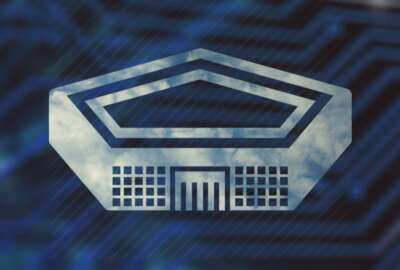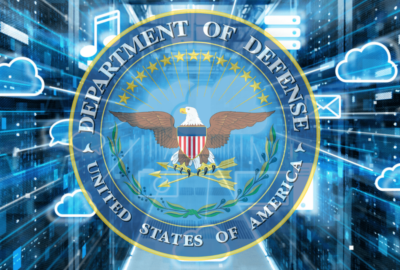Navy says it’s achieved big UX improvements amid DoD effort to ‘fix our computers’
In pilot projects, relatively-straightforward software changes have let Navy computers boot as much as 18 times faster than they did before. Officials say they want...
Up until this summer, it wasn’t uncommon for Navy IT users, even at the most senior ranks in the Pentagon, to plan part of their mornings around the 10 minutes it took for their computers to boot. But as part of a concerted effort to improve user experience, the service has shown it’s possible to cut those maddening daily waits to only about 30 seconds.
The dramatic improvements are part of a broader push across the Defense Department to improve user experience — spurred in part by a viral social media post that implored Defense officials to “fix our computers” — a Defense Business Board study that found 80% of employees are deeply dissatisfied with government IT, and direction from the deputy Defense secretary to start solving the problem.
Although the Navy’s efforts are still only in pilot stages that began with relatively small populations of users inside the Pentagon, officials believe they’ve learned enough about the root causes to start making bigger changes that will improve the average sailor or civilian’s experience at bases around the world within the year.
“What we did at the Pentagon early on was we started a playbook so that we could crowdsource this to other bases who were volunteering, and who were leaning forward,” Justin Fanelli, the Department of the Navy’s acting chief technology officer, said during an extended interview about the UX improvement effort on Federal News Network’s On DoD. “The volunteer queue has grown — in some cases they’ve started proactively, and in some cases they’re begging … a couple of the folks in the pilot have said, ‘Please, let’s scale this and not end it. If I have to switch back from this IT experience to what I had before, they would have to take this computer out of my clutching hands.’”
Fanelli said the UX improvements the Navy hopes to make in the coming months and years will have to be multi-pronged — the department knew at the outset that there wouldn’t be a single answer to its users’ frustrations, given the worldwide diversity in how those employees connect to networks and other local conditions.
But one thing the pilots have proven out is that, at least in most cases, fixing the computers isn’t about the hardware capabilities of the laptops and desktops themselves. The challenges have a lot more to do with bandwidth at individual worksites, and with software bloat on those endpoints — a years-long accretion of things like duplicative security and management tools that bog down otherwise-capable computers.
“Hardware refreshes have helped, but in more cases, the issue is the sprawl of software without necessarily one owner on top of all of it,” Fanelli said. “So we worked on a new operating system baseline. We had three different groups — two outside of the Department the Navy and one inside of the Navy — and we shark tanked whose image of the operating system was highest-performance. On the winner, we’re regularly seeing over 18x improvement on boot times. And we now get emails from E-3s and admirals alike saying, ‘Wow, this is much, much better.’ And that’s something that we want to scale to everyone as soon as possible.”
Some of the network-related challenges will take longer, particularly on bases that still use decades-old copper infrastructure and technologies like time-division multiplexing in the “last mile” between fast fiber networks and office spaces.
“For new construction, it’s a no-brainer to use newer technologies. We’ve piloted and we’ve gotten smarter on how to apply them on military bases in the last six months,” Fanelli said. “And for sites that are maybe seven years old, we’re pretty confident that you can remediate that through configuration as opposed to rewiring. But the 20-years-old-plus site rewiring [will have to be] part of a normal cycle. This is the Golden Gate Bridge of upgrades — you’re always doing some upgrade everywhere. But that normal cycle and figuring out how to do that differently, and cheaper, has been one that we’ve learned on … I wouldn’t say that the goal is to overhaul all transport by any means. It’s hooking up to the right solution for the right problem.”
One thing that’s helping the Navy figure out the right solution to the right problems is a drastic increase in proactive monitoring on individual IT endpoints.
For example, those figures about improvements in boot time aren’t just anecdotal or guesswork. They’re based on real-world metrics the service is gathering from performance measurement tools that are now installed on a sample of desktops and laptops at every base. The Navy can now gather data on what the user experience is like on 27,000 individual endpoints — up from just 200 at the start of the pilots.
“That takes us to a sample of about 6%, and it tells us how desktops at each site, each echelon, each systems command are performing,” Fanelli said. “It moves us out of being reactive, where we only have enough information to troubleshoot problems. Now we know who’s going to call before they call, and in some cases, we’ve solved the problem before they knew to call the help desk. Those are the real success stories that we’re after. We want as many people as possible to not have to think about their IT on a daily basis.”
Apart from the sheer number of UX-focused pilots the Navy has been conducting — there have been more than 20 this year — another reason the Navy’s been able to find fixes relatively quickly is that it’s been building on work already done in other parts of DoD.
The Air Force, in particular, helped the Navy start “on second base,” Fanelli said.
In a Medium post on Tuesday, Colt Whittall, the Air Force’s chief experience officer, noted that his service has also been aggressively monitoring end-device performance, and has seen similar results by proactively solving problems, surveying users, replacing outdated hardware and taking several other steps focused on UX improvement.
“In 2020 and 2021, dissatisfied users outnumbered satisfied users. In 2023 that’s reversed. Satisfied users outnumber dissatisfied users about two to one,” he wrote. “That is extraordinary progress for that period of time. Activity Response Time of Outlook, a key metric we follow, has improved significantly on the vast majority of bases, often by 50% or more.”
And Fanelli emphasized the effort to “fix our computers” is very much a joint effort, including via regular meetings and conversations with DoD’s chief digital and artificial intelligence office — where, by the way, the author of one of those viral social posts now works.
“The difference has been the number of folks who are hungry for change coming to the table, being willing to lean forward, working hard when no one’s looking, and we’re receiving outcomes in spades as a result of that,” he said. “If there are hungry people who want to continue to engage in this fight, we’re looking for civil servants who want to make things happen. We’re looking for vendors and partners with a bias towards action, and we’re going to go hard until our warfighters are happy.”
Copyright © 2024 Federal News Network. All rights reserved. This website is not intended for users located within the European Economic Area.
Jared Serbu is deputy editor of Federal News Network and reports on the Defense Department’s contracting, legislative, workforce and IT issues.
Follow @jserbuWFED






